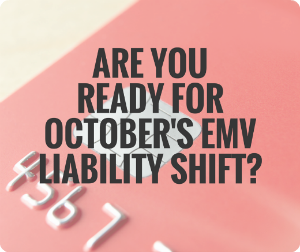Thompson brings 40 years of retail experience to his leadership role
The Minnesota Retailers Association is pleased to welcome Glen Thompson, store manager at JCPenney in Minnetonka at Ridgedale Mall, as its 2016 Board chair. In his volunteer role Thompson leads a group of 28 Board members from across the state and a staff focused on growing Minnesota’s retail economy and jobs.
Thompson lives in Plymouth and has worked in the retail sector for JCPenney since 1975. Thompson began as a store sales associate in St. Louis, Missouri and has held a variety of positions across the country, settling in his store manager role in Minnetonka in 2003.
“This past holiday season reinforced for me how important a vibrant, diverse retail industry is to Minnesota’s consumers, our communities, and employees. Retailers are an essential part of the state’s economy and I am excited to lead a Board and staff committed to the growth of retail throughout the state. I am pleased to play a role in an association dedicated to protecting and enhancing the one-in-five jobs in our State that depend on the success of retailers,” said Thompson.
Thompson's MnRA priorities for 2016 include:
- Advocate for retail at the Capitol - we play a critical role in shaping public policy as we work to improve the retail environment in Minnesota.
- Promote and enhance the retail industry - demonstrate the clear value and expertise of the organization to members, potential members, policy makers, and the media.
- Serve our members - inform and educate MnRA’s membership on legislative issues, as well as potential threats and challenges resulting from ever changing and improving technology, criminal activity, and fraudulent acts.
- Promote membership - increase the diversity of MnRA membership through targeted recruiting and grassroots network.
Thompson succeeds Chuck Armstrong who served as Board Chair in 2015 representing Burnsville-based Pawn America. Armstrong resides in Woodbury.
“2015 was a great year for the Minnesota Retailers Association under the leadership of Chuck Armstrong. Chuck made sure we had a strong presence across the state this past year-from Alexandria to Mankato,” said association president Bruce Nustad. “In addition, Chuck worked hard to help retailers understand how organized retail crime is impacting stores and cultivated new relationships between retailers and law enforcement.”
Thompson’s leadership role began January 1 and runs through December 31.
Written by Bruce Nustad
on Monday, 11 January 2016.
Posted in MnRA News
Ask federal officials to include e-fairness in the year-end budget package
As Congress winds up negotiations on an omnibus budget package before the end of the year, retailers as hopeful e-fairness language will be coupled with a permanent version of the Internet Tax Freedom Act.
Although we know it's a busy time of the year, we urge retailers in Minnesota to contact Senate and House members and ask them to urge federal legislative leaders to deliver e-fairness to retailers this holiday season!
See below for contact information.
Contact information:
Senator Al Franken
United States Senate
309 Hart Senate Office Building
Washington, DC 20510
(202) 224-5641
Contact Senator Franken
Senator Amy Klobuchar
United States Senate
302 Hart Senate Office Building
Washington, DC 20510
(202) 224-3244
Web email form
Timothy J. Walz (D-District 1)
1034 Longworth House Office Building
Washington, DC 20515
(202) 225-2472
Contact:
Tim Walz contact form
John Kline (R-District 2)
2439 Rayburn House Office Building
Washington, DC 20515
(202) 225-2271
Contact form:
John Kline contact form
Erik Paulsen (R-District 3)
127 Cannon House Office Building
Washington, DC 20515-2303
(202) 225-2871
Fax: (202) 225-6351
Erik Paulson contact form
Betty McCollum (D-District 4)
1714 Longworth House Office Building
Washington, DC 20515
(202) 225-6631
Betty McCollum contact form
Keith Ellison(D-District 5)
2244 Rayburn Building
Washington, DC 20515
(202) 225-4755
(202) 225-4886 fax
Contact form:
Keith Ellison contact page
Tom Emmer (R-District 6)
503 Cannon House Office Building
Washington, DC 20515
(202) 225-2331
Tom Emmer email form
Collin C. Peterson (D-District 7)
2109 Rayburn House Office Building
Washington, DC 20515
(202) 225-2165
Collin C. Peterson email form
Rick Nolan (D-District 8)
2447 Rayburn House Office Building
Washington, DC 20515
(202) 225-6211
Contact email form

Written by Bruce Nustad
on Monday, 07 December 2015.
Posted in Retail Operations, Policy & Politics
EMV/chip roll out requires action by retailers

Magnetic stripe credit cards have been around for decades, but that’s changing as the U.S. adopts what is considered a more secure payment technology—EMV (a new payment processing standard that stands for Europay, MasterCard & Visa). EMV cards, which are commonly called “chip” or “chip and PIN” cards are widely used in hundreds of countries outside the U.S. to reduce payment fraud.
EMV cards use a microchip on the front of the consumer’s card to produce unique transaction information each time a purchase is made, making it much more difficult to steal cardholder information, in contrast to magnetic stripe cards which contain enough cardholder data to be profitable for criminals. Some EMV/chip cards take the extra security step of requiring the cardholder to use a PIN number to complete the transaction.
Liability Shift?
With the change in card technology comes changes in liability for merchants beginning October 1, 2015. Under the new liability, generally when fraudulent or counterfeit cards are used the liability—or who pays for the charges—shifts to the party with the least secure system (the weakest link).
As an example, if a customer presents an EMV/chip card to a merchant and the merchant chooses to process the transaction using the magnetic swipe process because the merchant doesn’t have a terminal with chip technology, the liability for the fraudulent transaction rests with the merchant. In the case where a customer presents an EMV/chip card and the merchant’s processes the transaction as a chip transaction, liability for the fraudulent transaction rests with the issuer, not the merchant.
The change in technology and liability shift means merchants need to take a moment to consider upgrading their processing terminals to accept EMV cards. For some merchants, their average sales, their volume of sales, and their current amount of fraud will drive the decision to make the $350-$500 investment in a new terminal. For many, it’s a no-brainer as the cost of one single fraudulent transaction will justify the investment.
October 1 (Or After!) Checklist
Merchants are not required to change their hardware to accept the new EMV/chip cards, but given the liability shift and the security features, it makes sense to properly evaluate that decision. Here’s a checklist merchants can use before (and even after) October 1.
1. Determine Your Risk Tolerance: Look at current fraud rates (ask your processor if you don’t know), average purchase price, and number of purchases to determine if a change in liability might have a financial impact. Remember that the new liability model is different than today—just because you haven’t seen chargebacks for fraud don’t assume fraud doesn’t happen. (Tip: card-not-present transactions (over the phone, on-line) will work the same what they do today.)
2. Plan To Evaluate In The Future: No matter what is decided today, make evaluating risk tolerance and payments systems a part of an annual business review.
3. Discuss Terminal Options: A quick call to the credit card processing vendor makes sense. Obtain pricing information for a terminal that accommodates how and when customers pay. In many cases a standard, new terminal will be $350 to $500. (Tip: Consider asking for a terminal with NFC or “near field communication” capabilities to accommodate new “tap” payment technologies. It’s generally an inexpensive upgrade.)
4. Plan For Implementation: Thinking about how and when to upgrade a terminal should include thinking about how and when a customer pays. An equipment upgrade is a great time to consider where data or phone lines should be and customer access to the terminal. (Tip: When processing a chip transaction with a PIN, the customer needs access to the terminal to input their PIN number.)
5. Train Employees And Customers: Customers often times want to slide their EMV/chip card in and out of a terminal just like they have done for years when paying with their magnetic swipe cards, however a chip transaction requires the card be kept in the terminal through the whole transaction (including adding a tip and entering a PIN). A transaction can take up to ten seconds so employees often times need to walk the customers through it from start to finish. (Tip: To ease with the transition, most EMV/chip cards still have a magnetic stripe on the back and can be processed either way, however this can be confusing for customers and employees.)
Written by Bruce Nustad
on Monday, 28 September 2015.
Posted in Retail Operations


